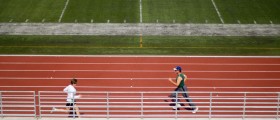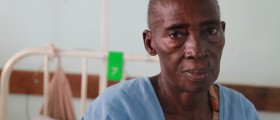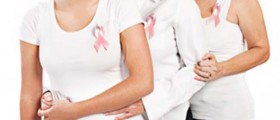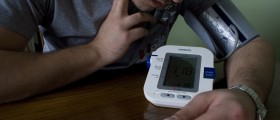
Many factors may affect health. Aging process and genetic predispositions are things people cannot control. However, there are some steps toward healthy living that may significantly help reducing the risk of serious conditions such as heart attack, cancer, stroke etc.
Physical activity
Regular aerobic exercise increases physical fitness and overall health and wellbeing. It can even prevent and reverse age-related conditions that affect our muscular system, improve flexibility, balance and endurance. This may help the heart by making it work more efficiently during exercise and at rest. Physical activity plays an important role in prevention of cardiovascular disease, stroke, diabetes, obesity, and hypertension. Weight-bearing exercises help building bone strength and thus may prevent osteoporosis.
In patients suffering from arthritis regular exercise may improve their ability to perform daily activities: driving, climbing stairs, opening jars...
Cardiovascular exercises increase heart rate and thus reduce anxiety and the stress. Walking, swimming, biking, inline skating, pilates and aerobics are well recommended.Consequences of physical inactivity
Regular physical activity helps control blood lipid abnormalities, diabetes, and obesity. It may also reduce hypertension. People who started regular aerobic activity after a heart attack had higher survival rates than those who didn't.It also helps building healthy bones, muscles and joints and thus reducing the risk of colon cancer.In a psychological realm, it helps reducing depression and anxiety while improving mood.
Exercise recommendation
30 minutes of modest exercise (walking, slow jogging, housework) at least 3-5 days a week. Exercise can be divided into a couple of smaller 10-minute sessions, it should start slowly and progress gradually, to avoid the injuries. Final goal should be 30 to 60 minutes of moderate to vigorous exercise each day.
Cautions
Some people should consult their doctor before starting a vigorous exercise program:Men over age of 40 or women over age of 50 People who already had stroke Patients with lung disease, asthma, arthritis or osteoporosis People who feel chest pain, short breath or discomfort in the chest area. Individuals at high risk of developing coronary disease Cigarette smoking
Cigarette smoking is the most important preventable cause of death. Even the long-term exposure to secondhand smoke can be hazardous to health, It may cause cancers of the lung, mouth, lip, tongue, esophagus, kidney, and bladder; cardiovascular diseases; chronic lung diseases and can affect low-weight births.Alcohol consumption
Alcohol abuse is the major cause of liver cirrhosis. It may lead to coma, kidney failure or even cancer, in some cases. Alcohol is a significant cause of injury and death from both car and home accidents, drowning, and burns. Many treatment programs and approaches are available to support alcoholics who have decided to get help. Key step to the recovery is admitting there is a problem and committing to address it. Support from the family and close friends is crucial.
High-risk sexual behavior
Problematic sexual behavior may often lead to unintended pregnancies, infection, and damage to reproductive health. The worst consequence may be transmission of HIV and other sexually transmitted diseases such as: chlamydia, gonorrhea, syphilis, herpes... Human papilloma virus, which is the main cause of uterine cancer, is also transmitter sexually.
Unprotected sex should be avoided by any cost, as well as having the multiple sex partners, partners with history of intravenous drug use or venereal disease.
Excessive sun exposure
Risks of excess sun exposure include developing melanoma and other skin cancers. It is recommended to avoid sunburns and sun exposure without protection, wear hats, protective clothing and sunscreen.











_f_280x120.jpg)





Your thoughts on this
Loading...